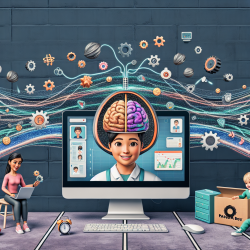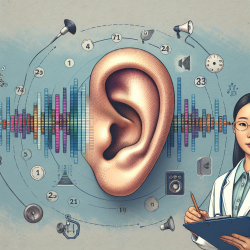Introduction
In the realm of special education, practitioners often encounter challenges in addressing the diverse needs of students, particularly those with cognitive and sensory processing differences. The study titled "Effects of Aging and Distractors on Detection of Redundant Visual Targets and Capacity: Do Older Adults Integrate Visual Targets Differently than Younger Adults?" provides valuable insights into how aging affects visual target detection, offering implications for improving educational strategies.
Understanding Redundant Target Effect (RTE)
The Redundant Target Effect (RTE) refers to the phenomenon where individuals respond faster to visual stimuli when presented with two identical targets compared to a single target. This effect is particularly pronounced in older adults, who experience an increase in RTE due to difficulties in inhibiting distractors. This research highlights two primary theories: the speed of processing and inhibition of distractors.
Speed of Processing vs. Inhibition of Distractors
The speed of processing theory suggests that cognitive slowing with age leads to increased RTE, while the inhibition of distractors theory posits that older adults struggle more with filtering out irrelevant information, leading to increased RTE. The study's findings support the latter, indicating that older adults' increased RTE is due to difficulties in ignoring distractors rather than a generalized cognitive slowdown.
Implications for Practitioners
- Enhancing Focus: Practitioners can implement strategies to minimize distractions in the learning environment, thereby aiding older adults and students with similar cognitive profiles in focusing on relevant stimuli.
- Redundancy in Instruction: Incorporating redundant signals in instructional materials can help older adults and students with cognitive processing challenges respond more effectively to educational tasks.
- Customized Interventions: Tailoring interventions to address the specific needs of students who struggle with distractor inhibition can improve their learning outcomes.
Encouraging Further Research
While the study provides significant insights, it also opens avenues for further research. Practitioners are encouraged to explore how these findings can be applied to different educational settings and student populations. Understanding the nuances of how aging and cognitive differences affect visual processing can lead to more effective educational strategies.
To read the original research paper, please follow this link: Effects of Aging and Distractors on Detection of Redundant Visual Targets and Capacity: Do Older Adults Integrate Visual Targets Differently than Younger Adults?










